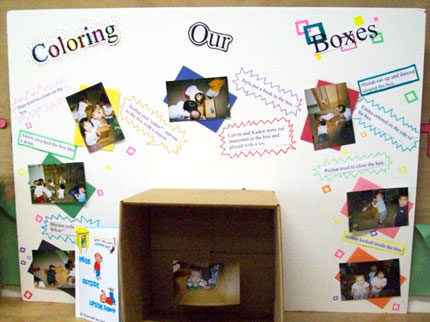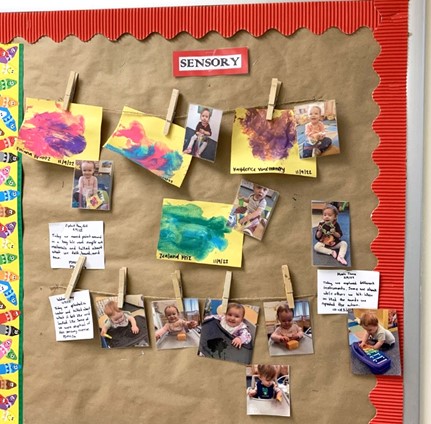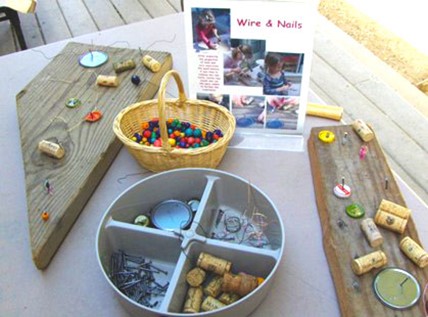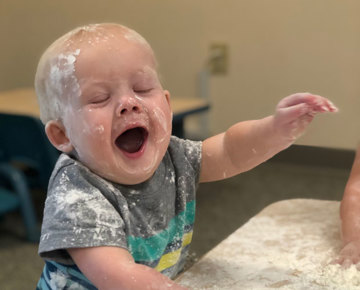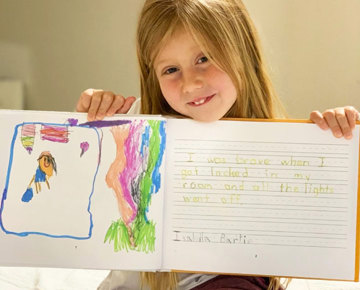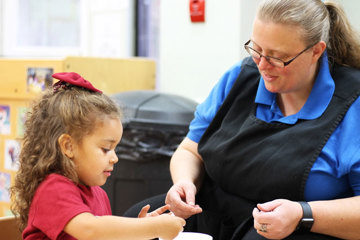Documenting Hands-on Experiences and Interactions Using Learning Stories
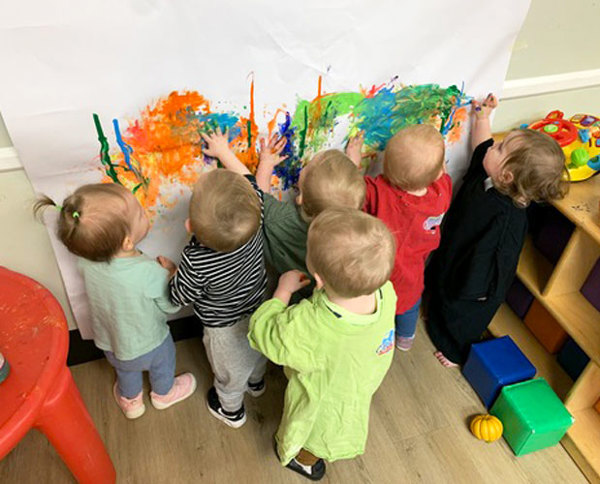
Documenting Hands-on Experiences and Interactions Using Learning Stories
By Yvette Dennis, Education Specialist
What is a Learning Story?
Are you looking for a way to display active learning? Learning stories are a great way to showcase the learning experiences happening in your classroom!
Learning stories are unique in that they document not just the finished product – like a work sample of a creative art project, for example – but also the detailed processes that took place. Sharing the process helps you and families better understand the many ways children learn through the experiences you are providing.There are a few elements that are key in creating a learning story. We can create a story by asking the following:
- Who participated in this activity? That may include the teacher and all children involved.
- What were the children doing during the activity?
- What was the outcome of the activity?
These stories may differ in length. Some activities may have an artifact or work sample from one or more children. Nearly any activity can be illustrated with a photograph; photos can also be shared in LineLeader.
Benefits of Learning Stories
There are several benefits of creating and displaying learning stories. The overall goal is to highlight not only learning, but developmental milestones that can be used for assessment purposes. Teachers will also learn more about their children’s strengths and milestones they are working towards, and families will get a detailed view of active learning taking place in their child’s classroom. Learning stories are also a great way for directors to showcase learning during tours with future families.
Documentation From Learning Stories
When breaking down a learning story into a detailed process, an overview of a child’s progress and interaction are highlighted. The various segments that make up a learning story can detail the learning and progress a child has made during the activity. Learning stories showcase everyday efforts children display in reaching milestones. These notes, artifacts, and pictures can be added to that child’s portfolio noting growth that is being made or progress that still needs attention and practice. This is a great way to document a child’s learning journey. Take notes to highlight victories and areas that need more attention.
How Do I Choose an Activity to Develop Into a Learning Story?
Deciding which learning experiences should be turned into a learning story should be based on a meaningful and reflective opportunity to not only showcase, but also to discover, children’s thinking on a deeper level.
For example, Explorers can take a nature walk on their playground and collect items such as leaves, flowers, and sticks. They then can come inside and create a classroom collage with those materials. While completing the collage, teachers can ask questions such as the following:
- What do you see?
- How do these materials feel?
- Can we name any colors we see?
- What’s your favorite material?
- These flowers are pretty. Do you like flowers? What makes flowers grow?
While asking questions, teachers record the answers and take pictures. This would be a fun activity to create into a learning story because all of our five brain-building domains (CLaMoRS) are being covered. Teachers can also include the Creative Curriculum Objectives for Learning and Development that are aligned with the learning experiences being described.
Take a look at a few fun ways to display learning stories!
